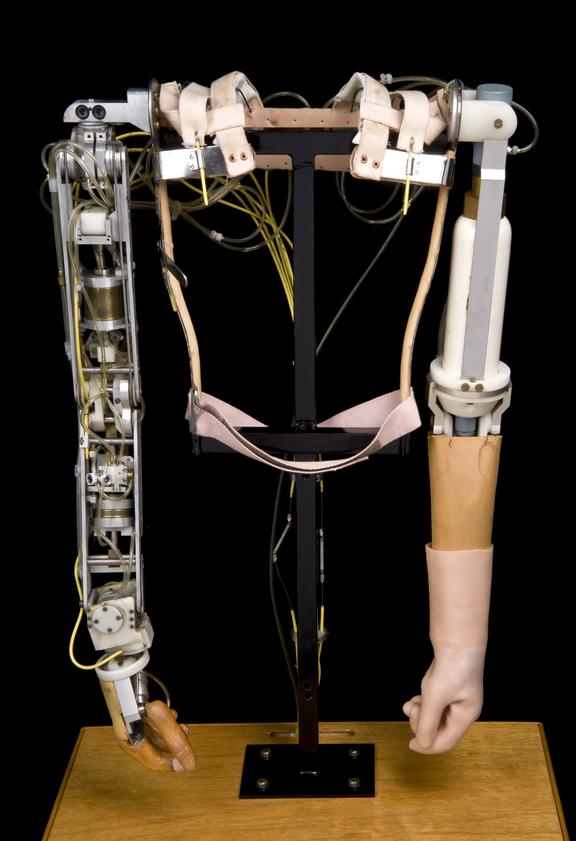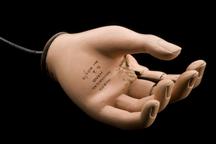





Complete arm prosthesis, with motor-driven car assembly, powered by compressed air, by the Orthopaedic Bioengineering Unit, Princess Margaret Rose Hospital, Edinburgh, 1979
Movements of this arm prosthesis are controlled by movements of the muscles around the child’s shoulder blades. These movements are powered by compressed carbon dioxide. The gas is stored in cylinders in what was called the ‘passive’ arm. An active child might use two gas cylinders per day. Such limbs were fitted to children from 18 months upwards.
The arm prosthesis was developed by the Orthopaedic Bioengineering Unit at Princess Margaret Rose Hospital, Edinburgh during the 1960s. Originally known as the Powered Prosthetic Unit, it was set up in 1963 to develop prosthetic or artificial limbs for children living with limb difference caused by the compound thalidomide. By 1967, the Unit was renamed and moved to the Princess Margaret Rose Hospital.
Prosthetic or artificial limbs were in part meant to act as reparations for the impairments that thalidomide had caused. They were frequently used as a way of visually “normalising” the bodies of people living with thalidomide impairments. Many question who these supposed improvements were really meant to help. Some children underwent operations to make the prosthetic limbs fit better which could include amputations. Children had little input into these decisions and the trauma of some of these medical interventions is still felt today, both emotionally and physically.
Thalidomide was a compound found in drugs prescribed to people in the late 1950s and early 1960s. Although today it is associated primarily as a treatment for pregnancy related nausea, it was also prescribed to anyone experiencing symptoms of colds, flu, headaches, anxiety, and insomnia. Thalidomide causes nerve damage in the hands and feet of adults, but when taken in early pregnancy it causes impairments such as limb difference, sight loss, hearing loss, facial paralysis, and impact to internal organs. One tablet is enough to cause significant impairments. Researchers later identified that there was a link between the impairment a person is living with, and which day of the pregnancy thalidomide was taken. UK distributors withdrew the drug in 1961 and a government warning was issued in May 1962.
Details
- Category:
- Orthopaedics
- Object Number:
- 1979-894
- Measurements:
-
overall: 560 mm x 170 mm x 400 mm, 4.19 kg
- type:
- artificial arm
- credit:
- Lothian Health Board




